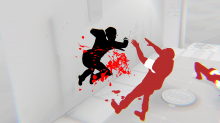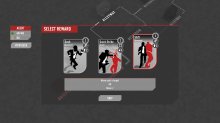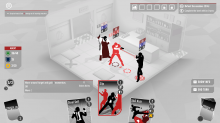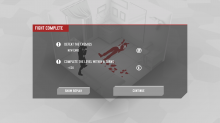Fights in Tight Spaces early access first impressions
The basic setup is reminiscent of other strategy roguelikes that have come before, like FTL: Faster than Light. There are five missions to get through without dying once (technically you can start at a later mission, but you'll be at such a disadvantage from not getting upgrades that it would never work). Each mission consists of a series of short encounters that grant a small reward at the end, and you use these small rewards to build up larger upgrades to prepare you for the final battle. While that structure is the same every time, each encounter will be procedurally generated--enemies, maps, types of encounters, rewards, your moves; everything is up to random chance. Whenever you reach a certain milestone, new starting options will be unlocked for you.
It's a tried and true formula but, frankly, if it ain't broke, don't fix it. The permanent death makes each and every encounter tense, the brief length of each run makes it easy to get caught up in a "just one more try" mindset, and the randomness is enticing in an ineffable way that makes it much easier to get sucked in.
What makes it really sing, however, is the core combat. Each fight takes place in a crowded room (hence the title) on a grid, and players are given a deck of cards to create their moveset. There are a lot of things to strategize around, and the unforgiving nature of roguelikes cranks up the intensity and makes you really think three and four moves ahead. You start each turn with so much momentum, and each card uses varying amounts of momentum to be played. But some cards can also regain momentum, so you've got to give careful consideration to the order in which you play them. Every attack you connect builds up your combo, which you can sometimes use in place of momentum to play a card, or a high combo might increase the damage output of an attack. Certain moves will deplete your combo gauge, though, so you've got to make sure you're not sacrificing an attack dependent on a high combo early in your turn. Many moves also revolve around placement--not just the distance between you and your target, but whether they're up against a hard surface you can slam them into, or if there's a connecting wall you can run along to kick them. These moves force you to consider everything in the room more than you normally would, and it makes the most of the minimalist design. Really, that's the clever thing about the combat here. It doesn't add in a bunch of systems or overwhelms you with a bunch of moving parts, but it connects the few simple systems it has in such a way that they end up being more than the sum of their parts.
Roguelikes don't tend to have much story since you'd end up repeating it so often, and Fights in Tight Spaces is no exception. Regardless, the bits of narrative that are here are fun. You play a secret agent sent through four different gang hideouts to eliminate enemies ranging from bikers to full-on ninjas. The story segments are all pretty brief and played mostly straight, which make the occasional bits of absurdity pop, such as the random event tile where you enter a dark building to find a surprise party waiting for you, and are awarded $100 in gifts.
The music and art direction stick to this minimalist style, too. While it might just be an early access thing, it actually fits the game pretty well, because the gameplay is always the focus in a roguelike, and this keeps the focus where it needs to be. Everything is presented in a stark black and white that contrast very nicely, and put a nice emphasis on the reds that spurt out after a hit. The music is fairly sparse, but a lot of attention is paid to the sound effects, as each hit still feels impactful and real. It's a clever design that keeps you immersed in nothing but the fight, and gets you pulled into the addictive nature of roguelikes even easier.
Fights in Tight Spaces doesn't do anything to revolutionize its genre, and if you're not normally into roguelikes, this won't be the game to convert you. However, if you're one of us who get suckered in by the endless possibilities of randomization and love strategy combat, there's a lot of addictive goodness to be found here.










 (
(



